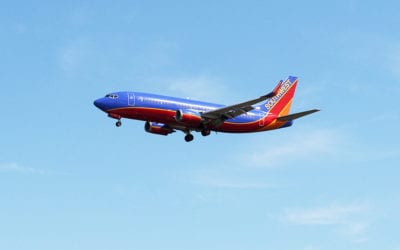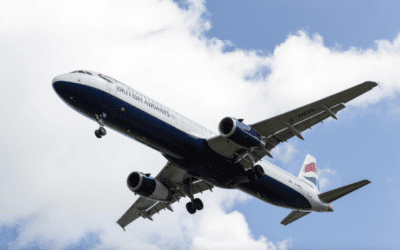Delta just announced the start of in-flight internet access. Prices will range from $9.95 for flights under three hours, to $12.95 on flights of three hours or more (Does this account for ATC holds and other delays?). Delta is promising to roll this service out across their fleet finishing by the middle of 2009.
So, what does this offer the average business traveler? Delta is partnering with a company called Gogo Inflight Internet. The system used by Gogo is, to this writer, relatively simple. They have a series of cell towers across the US that will serve to create a coverage cloud over the entire continental US. Gogo is using what they are calling a 4G network (Right now, the best we have from AT&T, Verizon and the rest are 3G). The technology will be aimed upward toward the sky, to cover the planes above 10,000’ in altitude. American Airlines has also announced testing of the same system on one 767 with plans to install the hardware on a total of 15 aircraft.
Other airlines like Continental and JetBlue are eyeing Internet connectivity using different technology. Both are using JetBlue’s LiveTV subsidiary as a provider. LiveTV’s service is built on the old Airphone spectrum it bought a few years ago. The JetBlue system is limited to one plane, nicknamed BetaBlue. This plane is being used as a test bed for the new technology. The offering from JetBlue is limited though; only email, Yahoo instant messenger and some searching of Amazon.com are offered. Continental plans on starting trials next year.
Gogo is promising bandwidth equal to 22.7Mbps to each plane, but should ramp up to near 300Mbps once their 4G network is complete. To put that in perspective, each plane will have service similar to Verizon’s new high speed Fios. This starting amount should be fine for most users to retrieve email, surf a little and maybe VPN home to retrieve a file or two. They will have to keep close tabs on the network to be sure too many folks don’t start using it to download movies or music from services like iTunes. If they allow that, service will quickly slow to a crawl.
Gogo is the second attempt at a marketable full Internet service for planes. The first, Connexion from Boeing, was doomed by high cost and low penetration in the domestic market. I wrote a review of Connexion a few years back before it closed up shop. It worked but it was pricey. Perhaps with its lower price point, these new services will survive. They also might just get caught in the stream of customer dissatisfaction over ever-increasing fees.
Of course, all of the technology in the world doesn’t help if the airplane doesn’t have power outlets or your computer doesn’t have a powerful battery. Delta doesn’t have any power outlets in the coach section of their fleet but they have the Internet connections. American has lots of power outlets, but no connectivity. Go figure.



